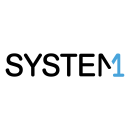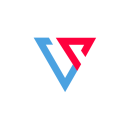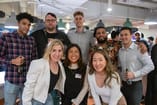“We think about the needs of the business — which means the needs of our people — and then create policies that allow things to flow,” said Versus System’s CEO Matthew Pierce.
People are the foundation of any successful organization, and no one knows this better than Pierce and System1 CTO Antonio Magnaghi. They shared the secrets to what an employee-first scaling strategy looks like. From incorporating new perks to sustainably growing tech infrastructure over time, the two tech leaders shared insight on how their companies kept their culture in check as their operations expanded.

When you’re used to doing things a certain way, adopting new habits can take work. System1’s CTO Antonio Magnaghi described how tough (but necessary) it was to reorganize the adtech company’s tech infrastructure as they expanded and prepared for future growth.
What’s a growing pain you experienced as the company scaled? What was done to overcome that challenge?
Over the past six years, System1 has grown from having one office with 45 people to having five offices and over 300 people. Going from having every team in one room to being distributed across several offices and timezones required a shift. The biggest shift was with people; figuring out how many we had to hire, looking for candidates with the right skills and ensuring that hires were a culture fit.
Then, we had to actively think about common processes, communication and coordination. I took the lead in setting common standards to define how technology is built across teams. Our head of product took the lead setting up processes to align multiple teams around common goals and objectives, communication, coordination and day-to-day execution.
Going from having every team in one room to being distributed across several offices and timezones required a shift.”
What were the most important lessons learned during that period of scale?
As System1 acquired other companies and grew, it became increasingly important for us to have systems and architecture in place to support organic and non-organic growth. We shifted from solely focusing on growth to balancing growth efforts with a technology roadmap that complimented scale. It’s important to architect your technology so that more people can work on it and leverage common systems in multiple areas to scale growth efficiently.
Never stop innovating is another lesson. Our approach has always been to take the technology that we developed and leverage it to innovate across the company.

Versus Systems is working to improve the gaming experience for digital players through its in-game rewards platform. Similarly, CEO Matthew Pierce said that as the company scaled, it aimed to improve the experiences of its team members through initiatives like better perks and opportunities for more remote work.
What’s a growing pain you experienced as the company scaled? What was done to overcome that challenge?
We invest a lot of resources into building a talented staff and a culture that reflects our values: community, curiosity, diversity and empathy. As we grow, the ways those values are implemented changes and we adjust our perspective to ensure that the company has what it needs to continue being successful: dynamic employees whose needs are met to create their best work.
Our head of people makes sure our leadership team talks a lot. We think about the needs of the business — which means the needs of our people — and then create policies that allow things to flow. These include benefits like transitioning to a remote workplace, continuing to offer unlimited paid vacation and making sure our new parents are able to go on ample leave. Remaining cognitively flexible is a big part of what keeps us going.
More people means more diversity of thought.”
What were the most important lessons learned during that period of scale?
Never assume. Always ask questions, and ask them of multiple people. Discuss the answers, and then make sure that people see those answers turn into something concrete.
When we began, our staff was very small; your typical five people in a room. Now we’re composed of people from several backgrounds and stages in life who code, design, sell, maintain and always strive to work together. More people means more diversity of thought, of needs and expectations. Anticipating those needs while also responding to the ones we didn’t see coming has been a growth opportunity.









